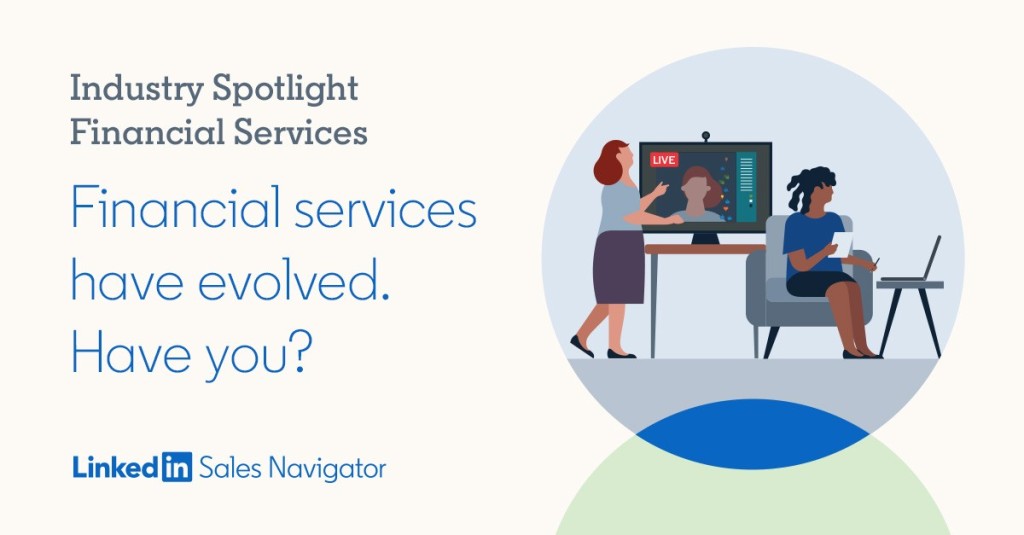B2B sales strategies and trends
Selling in financial services has evolved. Have you?
There’s no denying that the pandemic has accelerated the speed of transformation across financial services, with digitalisation playing a starring role in the sector’s evolution.
Like many other industries, the financial services sector is currently undergoing a period of unprecedented change. An explosion of new entrants, evolving customer expectations and next generation technology have been keeping the industry on its toes for a while now. And that was before Covid-19 came onto the scene.
With a global pandemic added to the mix, the speed of transformation is now turbo-charged. But what has that meant for financial institutions’ business priorities?
Digital Investment - No longer just a "nice to have"
Last week I was joined by Owen Wheatley, lead partner for banking and financial services at ISG, for a virtual webinar about digital transformation in financial services. We discussed why digital investment is no longer a ‘nice to have’, but rather a lifeline for all types of banking institutions.
Today, customer intimacy, as Owen explains, is everything. Even before the pandemic restricted our movements and forced customers to interact with banks digitally, a new wave of challenger or neo banks was shaking up the status quo. Their ‘banking in a box’ business model, as Owen refers to it, is entirely centred around leveraging technology to provide better customer experiences. For millennials in particular – who make up more than 50% of the workforce in the UK – the ease of ‘banking on the go’ is something they both demand and expect.
For more traditional banks, this means transforming operations, for example via rapid cloud migration, to enable a mass personalisation approach aimed at securing customer loyalty and wallet share.
Ensuring productivity in the digital age
But improving customer experiences is just one piece of the puzzle. Alongside digital customer engagement, Owen identified three other priorities that most financial institutions are currently grappling with: new ways of working; increasing productivity and cost optimisation.
Certainly, when the pandemic hit, business continuity and operational resilience also took a hit, with financial institutions struggling to enable their global workforces with the right technology and security at a moment’s notice. Inevitably this also had a knock-on effect on productivity. In addition, massively reduced consumer spending and historic rises in margins for future losses have all had a huge impact on financial performance.
So, what does this mean for consultants working with financial institutions, or indeed consultants based at banks themselves who are trying to drive new streams of revenue?
In my opinion, it means taking a personalised approach. Rather than trying to sell the same product or service to everyone, consultants need to be focused on the individual and their needs and pain points. In order to do this however, you need access to real-time, actionable data insights to target the accounts and build better books of business.
According to the latest LinkedIn insights, 79% of B2B technology sellers are missing quality data for territory planning and that rises to 87% when it comes to data for account prioritisation. This tallies with Owen’s experiences too; he explained that many traditional banks in particular have a ‘spaghetti legacy of technology and systems’, with multiple, competing data sources to contend with.
The right data, at the right time
Relevant, actionable data is clearly essential, and tools like Sales Navigator can help. By enabling consultants to not only locate the right people, but also tailor messaging based on the business imperatives of the individual they’re speaking to, it allows sellers to engage with personalised outreach. In fact, financial services consultants see larger productivity gains than other industries when using LinkedIn Sales Navigator, including a 3.2x lift in connections.
Arming yourself with the most up-to-the-minute data is all well and good, but crucially Owen noted that the ability to feed and relay new insights into an existing database or CRM system can often be a major stumbling block for financial institutions. This is where LinkedIn Sales Insights, which enables you to create a foundation of high-quality, real-time data directly in your CRM, so you can more accurately size opportunities and figure out where to focus your relationship-building energy, can add real value.
Ultimately, customer centricity and personalisation are the driving forces behind much of the transformation within the financial services sector today. Certainly, at a time when 90% of C-Suite executives tell us they don’t respond to impersonal messaging, it’s never been more important to put yourself in your customers’ shoes and understand their evolving needs – and having the right (digital) tools for the job can help you do just that.
Find out how LinkedIn Sales Navigator and Sales Insights can help you to build and fortify relationships today.
Related articles



